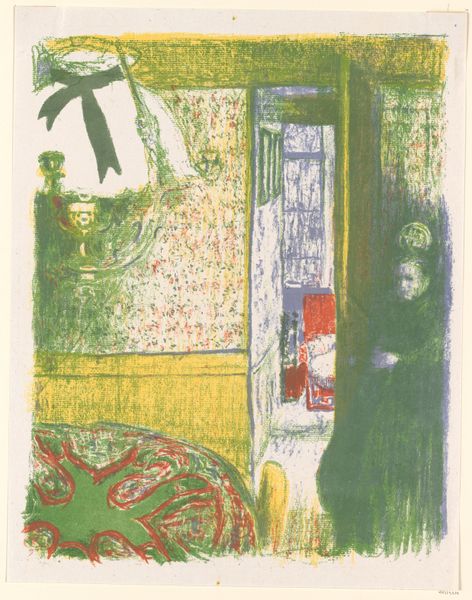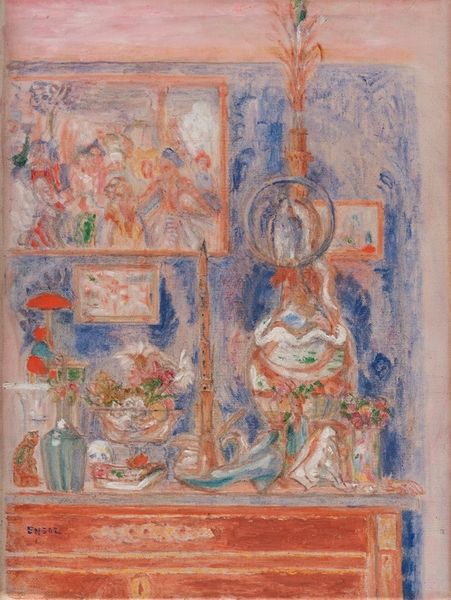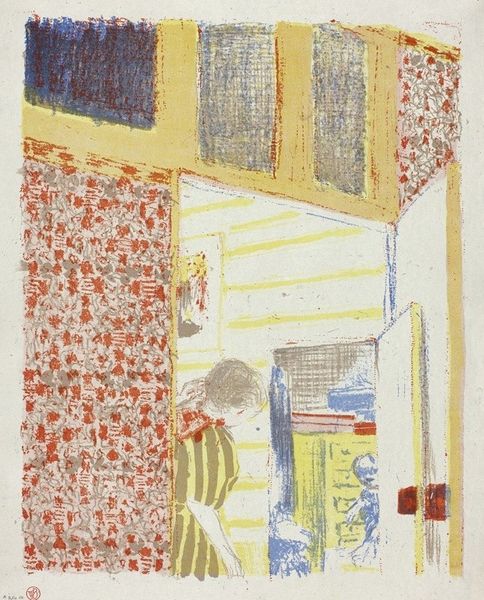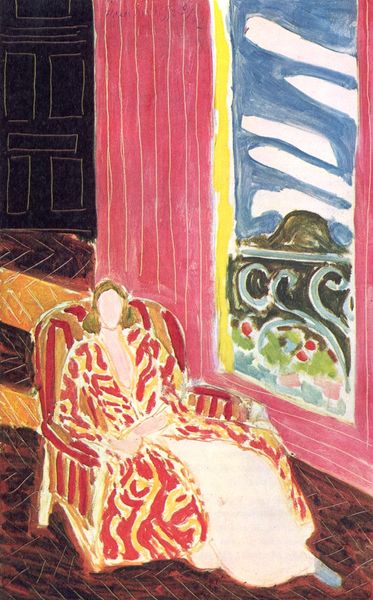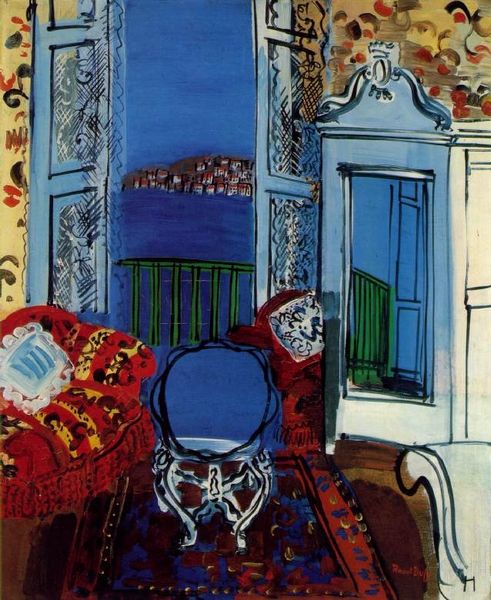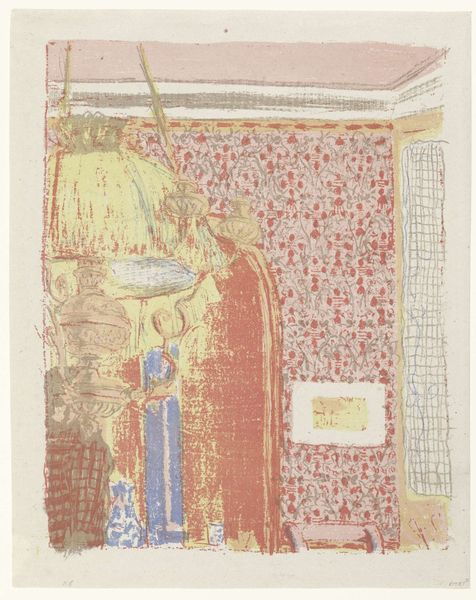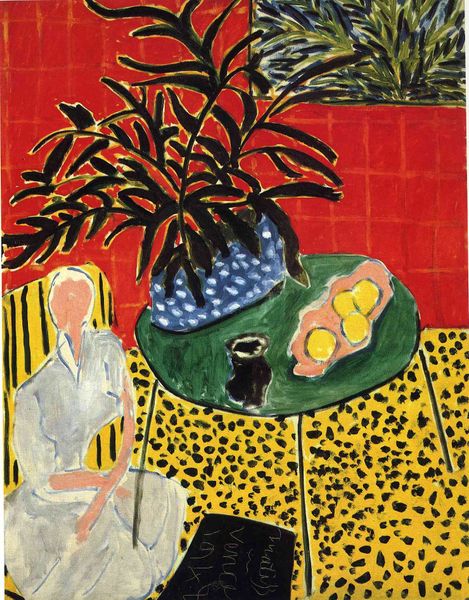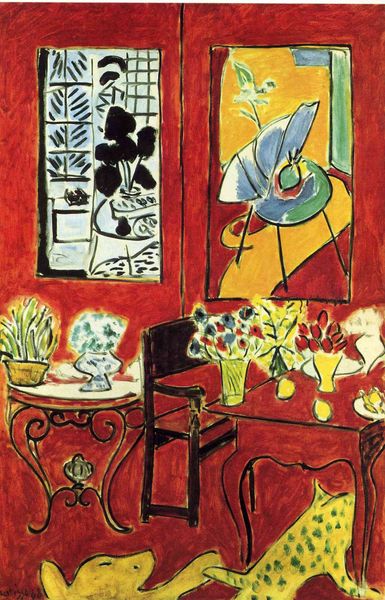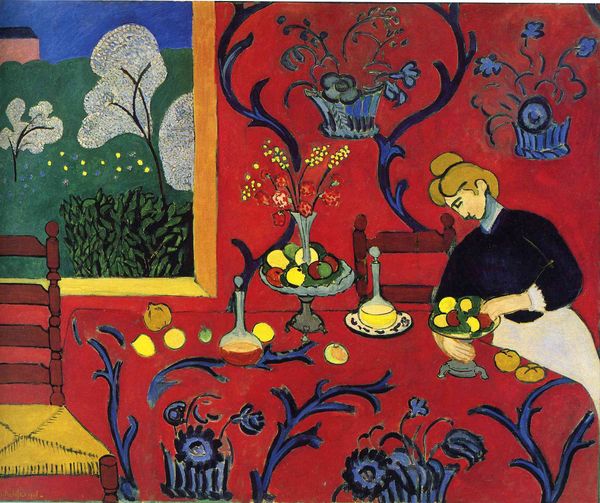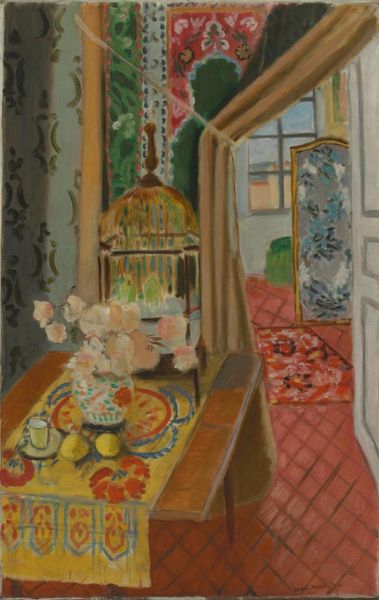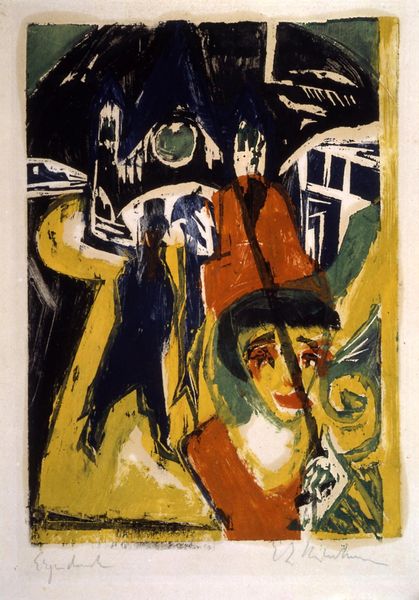
Copyright: Public Domain: Artvee
Édouard Vuillard, sometime in the late 19th century, captured this interior scene with an intimate, yet enigmatic touch. The dominant visual element is the interior space itself, teeming with patterns and layered details, from the floral wallpaper to the geometric fabric of the furniture. At the top left we see the dark form of the lamp shade. These elements could be interpreted as symbols of domesticity, reflective of bourgeois life in France at that time. We can think of similar interiors, for example, those painted in the Dutch Golden Age that also celebrated the home as a private sanctuary. Yet Vuillard infuses the scene with a modern sensibility. The interior becomes a stage where the boundary between safety and confinement is blurred, reflecting a psychological tension. This harks back to earlier uses of interiors, such as in van Eyck’s Arnolfini Portrait, where the room’s details are clues to deeper meanings. In this painting, the psychological charge is not confined to the room. The recurring motif of interiority, as a space of both comfort and entrapment, resonates across time, tapping into our collective memory of home, safety, and the hidden turmoil beneath its surface.
Comments
No comments
Be the first to comment and join the conversation on the ultimate creative platform.
